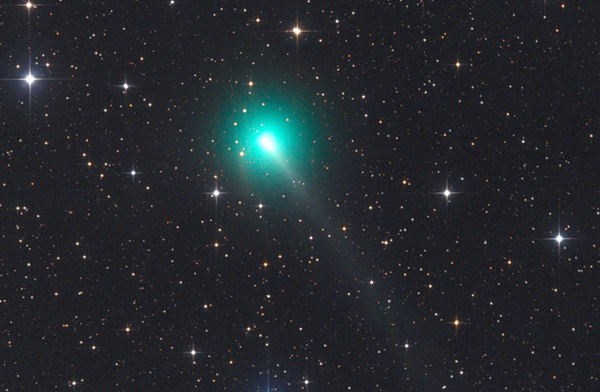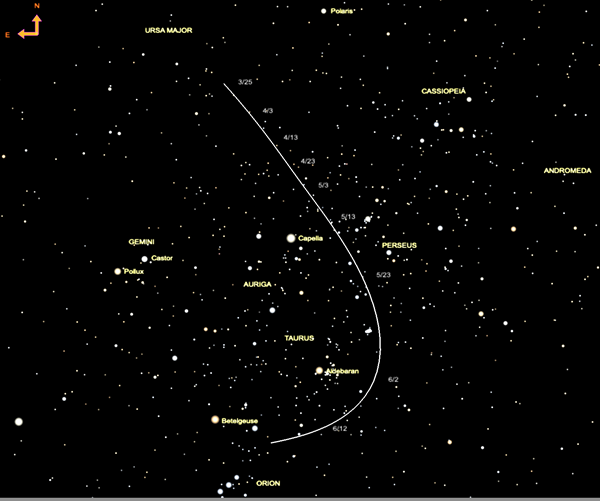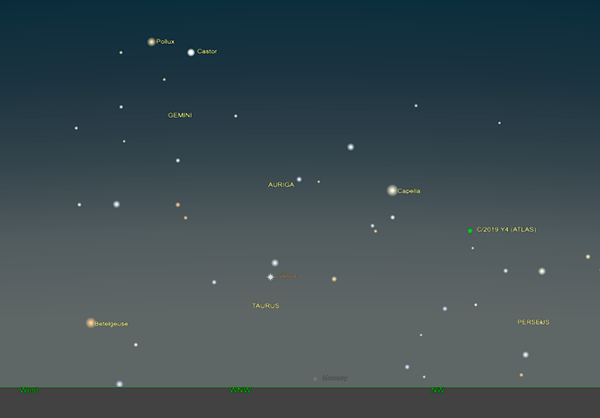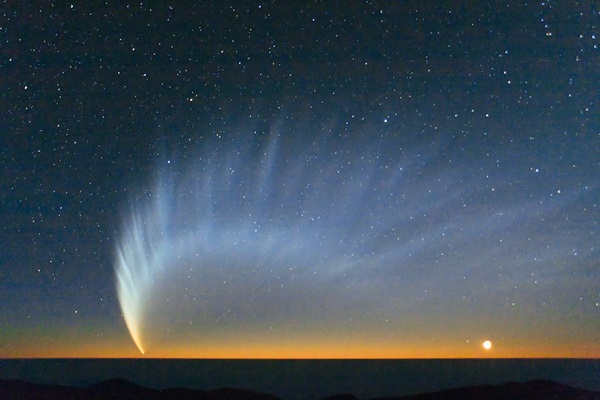Key Takeaways:
- Comet C/2019 Y4 (ATLAS), discovered in December 2019, is predicted to potentially become a highly visible object, possibly reaching a magnitude of -8, though its brightness remains uncertain.
- Optimal viewing locations for the comet in the Northern Hemisphere are between 40 and 60 degrees north latitude, with peak visibility expected around the comet's perihelion on May 31st.
- The comet's tail is anticipated to be a prominent feature, potentially exhibiting a green hue, kinks, and disconnection events. The dust tail's extent will depend on the comet's composition and may provide a visually striking display.
- The week of May 25th to 31st presents the best opportunity for observation, with the possibility of daytime visibility depending on the comet's brightness and atmospheric conditions. Caution is advised against viewing the Sun directly through optical instruments.
Right now, odds are that Comet C/2019 Y4 (ATLAS) will be wonderful. Just maybe it will be the most amazing thing you will ever see — a great comet for the history books. Here’s what we might be able to expect.
Past to present
Y4 was discovered on December 29, 2019, by the Asteroid Terrestrial-impact Last Alert System (ATLAS) search program, one of the several automated sky surveys looking for potential Earth-crossing asteroids. Discovering comets is essentially a byproduct of this endeavor. At the time, C/2019 Y4 was a feeble magnitude 19.6 and located at nearly 3 astronomical units from the Sun — almost twice as far from our star as Mars. (One astronomical unit, or AU, is the average Earth-Sun distance.)
In mid-March, Y4 ATLAS surged 4 magnitudes, fueling rumors that it will just keep getting brighter, peaking at magnitude –8. But back in 2000, C/1999 S4 (LINEAR) dropped the same amount on its approach and dissolved rapidly.
David Levy wrote that “Comets are like cats. They have tails and they do whatever they want.” Despite the best observations and understanding, these dirty snowballs can fizzle out with no notice even farther from the Sun than Mars’ orbit, a distance Y4 ATLAS reaches at April’s start.
The description here covers what we’re likely to witness: a fantastic display like Comet C/1975 V1 West delivered in 1976. Stay hopeful for the comet of a generation and realize that, at worst, it will still be a nice binocular object.
Location, location
The Northern Hemisphere has great seats from now right up until the comet reaches perihelion on May 31, when ATLAS makes its closest approach to the Sun and performs a sharp turn around our star. Observers from 40 to 60 degrees north latitude are close to the stage, with those from 50 to 55 degrees north getting front-row seats. Equatorial and southern locations get one decent week starting May 28, but then Y4 stays low and fades quickly into the distance, like an object viewed out the back window of a fast-moving car.
By mid- to late April, which includes the New Moon on April 22, ATLAS is already large and diffuse for its distance. Note that reported magnitudes are integrated, which essentially crunches all its light into a point, rather than spreading it out between the coma and tails. Magnitude 2 is easy for the unaided eye, but from the city a big halo will be invisible through the light pollution. Streaking halfway between Polaris and brilliant Capella, Y4 might resemble a lopsided Andromeda Galaxy.
By mid-May, ATLAS is second in brightness only to Venus! During the deep blue of nautical twilight, it is only 15° high, dropping lower as the calendar ticks onward. Avoid observing from locations just south of a city — there’s no point looking through a light dome. Instead, an open field to the north lets you observe as long as possible.
A tail to remember?
Our slanted view of the comet’s evolving tails is perfect. The gas tail glows from atoms ionized by ultraviolet light and blows straight back (away from the Sun) in the solar wind. Appearing gray to the human eye at first, the familiar green hue in March’s images effloresces into a brilliant emerald even in 8-inch scopes. It may transition to blue as ionization ramps up. Look for kinks in the turbulent flow and remain on the alert for the gas tail breaking during a “disconnection event,” when the tail appears to break away and then reforms a short time later. Spaceweather.com may publish advance notice of the celestial barber cut.
The dust tail spreads out from the core in a narrow sail-shaped fan, curving away from Polaris and up toward the Big Dipper. A really dark sky can double the length compared to a typical observing site. Look for striations — streaks resulting from the periodic ejections of dust as active spots rotate to face the Sun, turning on and off with each spin. The big unknown: Is Y4 ATLAS a lightly powdered rubble pile that produces a meager tail that dissolves into nothingness? Or does luck strike us with a dust-choked snowball whose tail forms the magnificent sword we see in paintings of old? A touch of aurora or noctilucent clouds would really top off the light show.
Use a range of magnifications. Crucially, zoom in to the core as much as the seeing conditions allow. Comet Hale-Bopp produced spiral jets that visibly changed in an hour for patient observers using high power.
Grandparents’ stories about a comet they saw when they were kids will be about the tail, not how bright the head was. Extra-bright tails happen when the dust lies between us and the Sun. That’s because in such a configuration, the tail takes the sunlight from below the horizon and scatters it forward. In 2006, Comet McNaught’s spectacular tail occurred with a low angle of 32°. For ATLAS, our viewing geometry of 48° gives a modest 1- to 2-magnitude enhancement — still mighty fine.
Perihelion: Pushing past daylight?
The week of May 25 to 31 is the week when we take the iconic pictures of Y4 and forge our memories of a lifetime. ATLAS is literally diving past the Sun, brightening a magnitude per day. The top half of the tail remains above the horizon all night, drawing our view downward. As minutes flow by, the tail brightens, overcoming the rising oranges and yellows of dawn until it reaches the brilliant head of the comet, lifting off the horizon. Keep using that scope to pick out low-contrast details of the inner coma — past sunrise if possible.
Even if the core of Y4 only rivals Venus, it is a daytime target for a whole week, never closer than 11° to the Sun. WARNING! Always take precautions against an unfiltered scope or binoculars accidentally pointing at the Sun and causing permanent blindness.
If the sky is a dark transparent blue and ATLAS exceeds our expectations, we might snag the elusive trophy of a historical daylight comet. Right now, only time will tell.
Look for regular announcements and recent images here at Astronomy.com.













